2022-2023 Year in Review
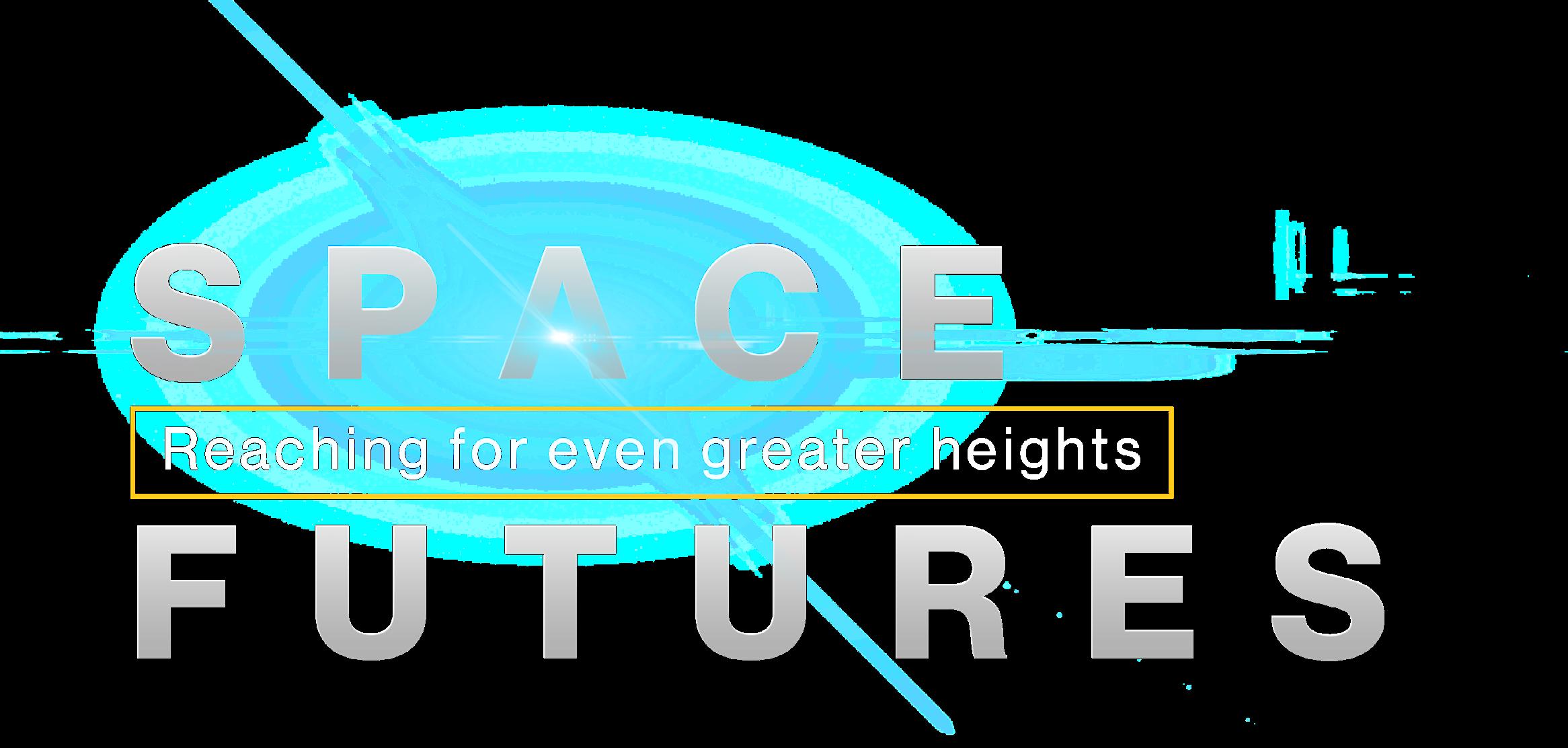



The ASU Interplanetary Initiative engages broadly across disciplines and sectors to create an interplanetary future built upon cooperative and inclusive new structures, systems and perspectives.




We focus on the big societal and systems questions that pave our future in space.

Learn Collaborate Innovate 02 Engage


Table of contents 03 Note from the vice president 04 Year in review 06 Top stories 08 Shared perspectives 10 Innovate 14 Pilot Projects 2022-2023 16 New Pilot Projects 2023-2024 25 On the way to impact 29 Project impact by numbers 30 Cumulative return on project investments 31 Interplanetary Laboratory 32 Interplanetary Fellowship 36 Learn 38 Technological Leadership 40 Online Undergraduate Research Scholars ................ 41 OpenCitizen 42 SciTech Space Leadership program ...................... 44 Collaborate 46 Orbital Reef ................................................. 47 Space Futures Convening 48 Sketch of Space ............................................ 49 Breakthrough Starshot 49 AZ in focus ................................................. 50 Arizona Space Summit 50 Space Career Fair .......................................... 52 ASU Space Student Ambassadors 52 Engage .......................................................... 54 Mission: Interplanetary podcast 56 Museum of the moon ....................................... 56 #AimHigher with #Space2Inspire 57 Interplanetary Project Transmissions ...................... 57 Team 58 Looking ahead .................................................. 64
vice president Note from the
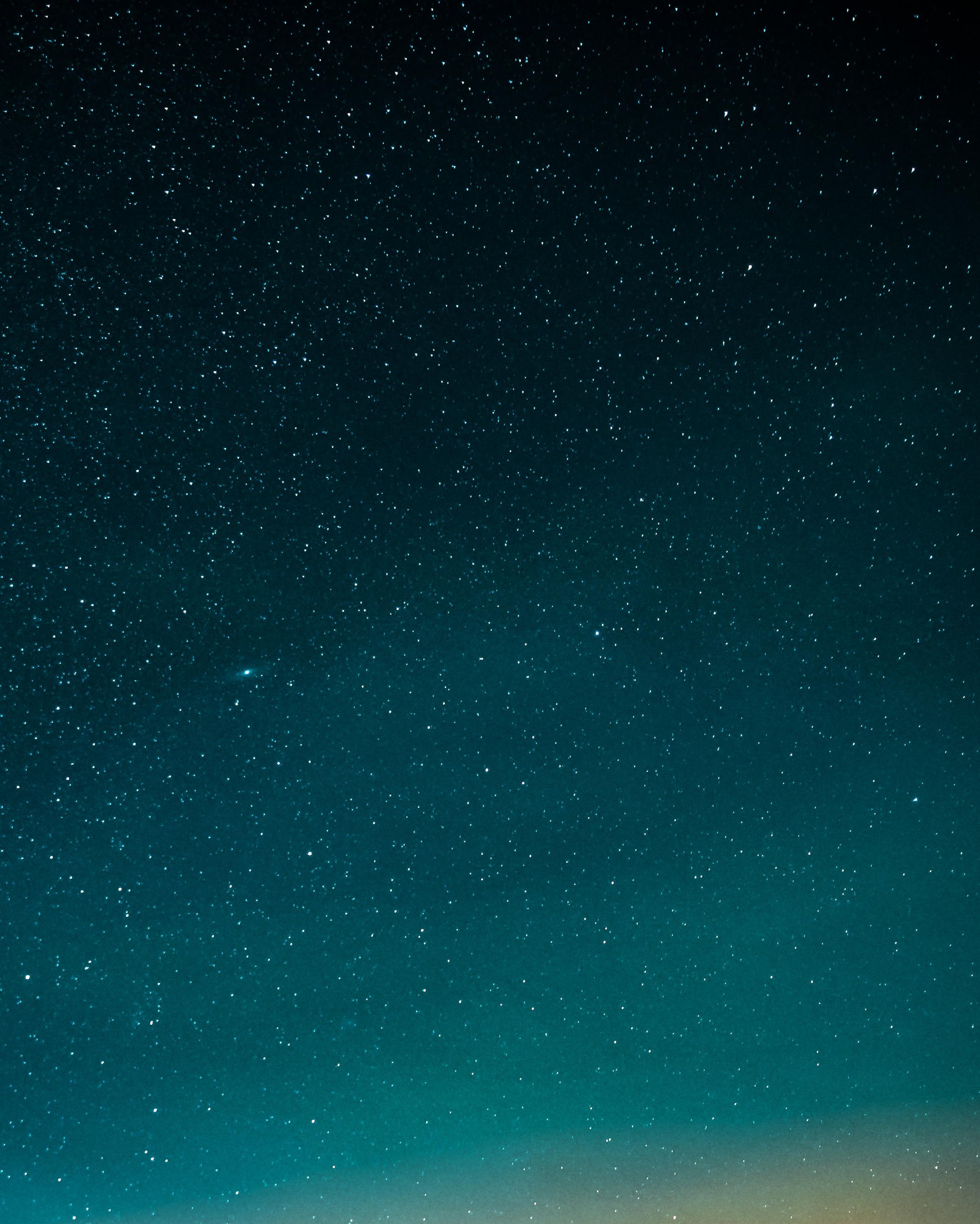
Dear friends,
I write to you at the end of our most productive year at the Interplanetary Initiative. Our collective efforts advanced interdisciplinary research projects, engaged a wider audience of students, and fostered valuable connections with space thought leaders.

In the past year, we introduced the Technological Leadership minor, welcomed dozens of new students into the degree program, and graduated seven students who are now embarking on their post-graduation careers. This year we also accepted the first interdisciplinary cohort of students into the new ASU Space Student Ambassador program, a competitive undergraduate leadership and professional development program for the next generation of space sector leaders.
New connections across sectors significantly advanced our mission. The first Arizona Space Summit charted a roadmap for Arizona’s space industry, and the first Preventing Space War forum explored strategies for a more sustainable use of space. We look forward to building on these important conversations and strengthening the connections that were made.
Thank you for joining us on this incredible journey, and we invite you to stay connected for more exciting updates in the future.
All the best,
 Lindy Elkins-Tanton Vice President, ASU Interplanetary Initiative
Lindy Elkins-Tanton Vice President, ASU Interplanetary Initiative
05
year in review 2022-2023


07
Top stories of the year
Interplanetary Initiative announces new minor in


The new minor in technological leadership complements and enhances a student’s existing major with key skills in interdisciplinary research, technology design and collaborative leadership. The minor aims to get more students involved in the hands-on, student-driven learning that is central to the Interplanetary Initiative’s other educational programs.
ASU Online students contribute to Interplanetary
The Interplanetary Initiative joins other units to support ASU Online students’ academic and professional growth by providing groupbased research opportunities and mentorship thanks to the Online Undergraduate Research Scholars (OURS) program from The College of Liberal Arts and Sciences and EdPlus. In fall 2022, the initiative supported 18 online students working across six of its interdisciplinary research projects, from bringing Mars down to Earth to using space for promoting peace.
Nearly 150 students from around the world convened in March to take part in the Interplanetary Initiative’s SpaceHACK for Sustainability Hackathon. Participants worked in teams to explore how satellite Earth observations and remote sensing technology from space can be used to better understand and address social inequities, sustainable development and environmental justice issues.
Space is not just for scientists
Hackathon gathers global students to tackle social, Deputy Director Jessica Rousset wrote an op-ed for Zocalo Public Square. She argues that in the new space economy, “our greatest innovation will be how we include all aspects of human endeavor in our future in space. We will need effective problem solvers and critical thinkers from all backgrounds and disciplines working together to create the future we all want on Earth, or
08
Preventing space war the focus of cross-sector experts at ASU forum


The Interplanetary Initiative sponsored the Preventing Space War forum that included a keynote address from the Deputy Chief of Space Operations for Operations, Cyber and Nuclear for the U.S. Space Force, Lt. Gen. DeAnna Burt, as well as panel discussions featuring viewpoints from cross-sector experts on space domain awareness, space law and armed conflict, and deterring conflict in space.
Preventing Space War Forum
May 17, 2023, Washington, DC
09
Lieutenant General DeAnna M. Burt Chief Operations Officer
United States Space Force
The amazing thing about the Interplanetary Initiative at ASU is that they are getting people to talk to each other and trying to create an environment that crosses the whole university.”
 – John Traphagan, Arizona State University’s newest Interplanetary Initiative Fellow
– John Traphagan, Arizona State University’s newest Interplanetary Initiative Fellow
I was inspired by the hopefulness, wisdom and collegiality of the panelists and moderators. Reframing humans as an interplanetary species can help open all of us to possibilities, to the prospect of a brighter future beyond what we know. The voices in the Sacred Space symposium are valuable exemplars, showing how we might listen and learn from each other. They model how religious traditions can help us look forward and outward as we cooperate to make our universe a home for us all.”
– Sacred Space webinar attendee

10
Shared perspectives
Programs and events engaged 19K+ people.

11
The space hackathon was such an amazing opportunity to work with students of all majors on real world problems. This work is the embodiment of what developing solutions should be, bringing together individuals of all backgrounds to solve problems. The hackathon was very beginner friendly. I didn’t come in with much experience with satellite data, but the tutorials and my peers were very helpful. Overall, I had a lot of fun learning more about GIS and how I can use it to solve problems in communities around the world.”
– Kennedy Gourdine, SpaceHACK undergrad participant

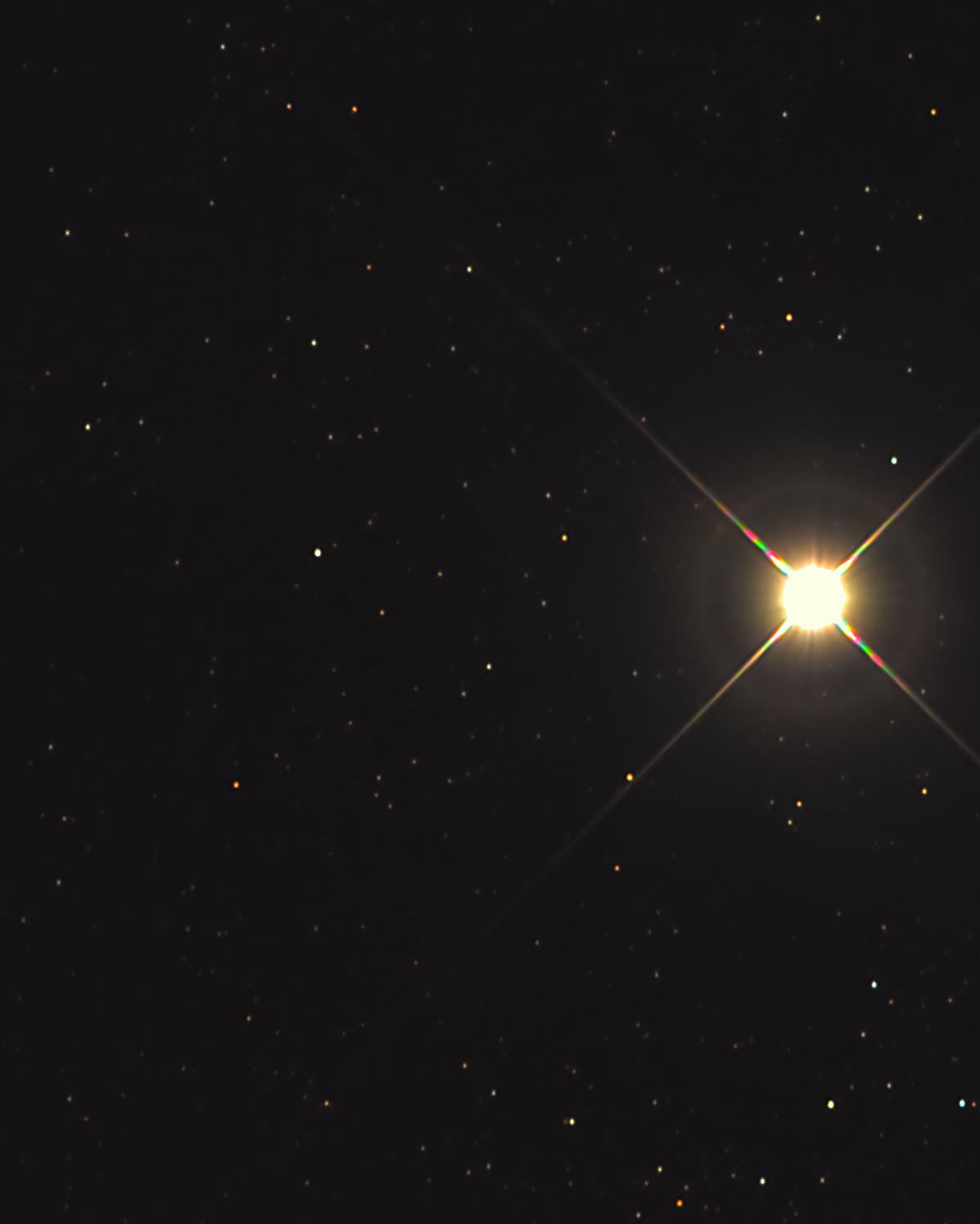
Research was something I had not enjoyed, nor was I great at when I first came to ASU. It was something that I struggled with for a while until I switched my major to technological leadership, and then I began to properly utilize it. Now, applying research processes to my tasks or projects feels enjoyable, and I get to learn something new every time.”
– Jeffrey Cascarelli, Technological Leadership BS graduate, May 2023

12
Involved in 44 outreach events and public engagements. Featured in 24 media stories across ASU News and third party publications.

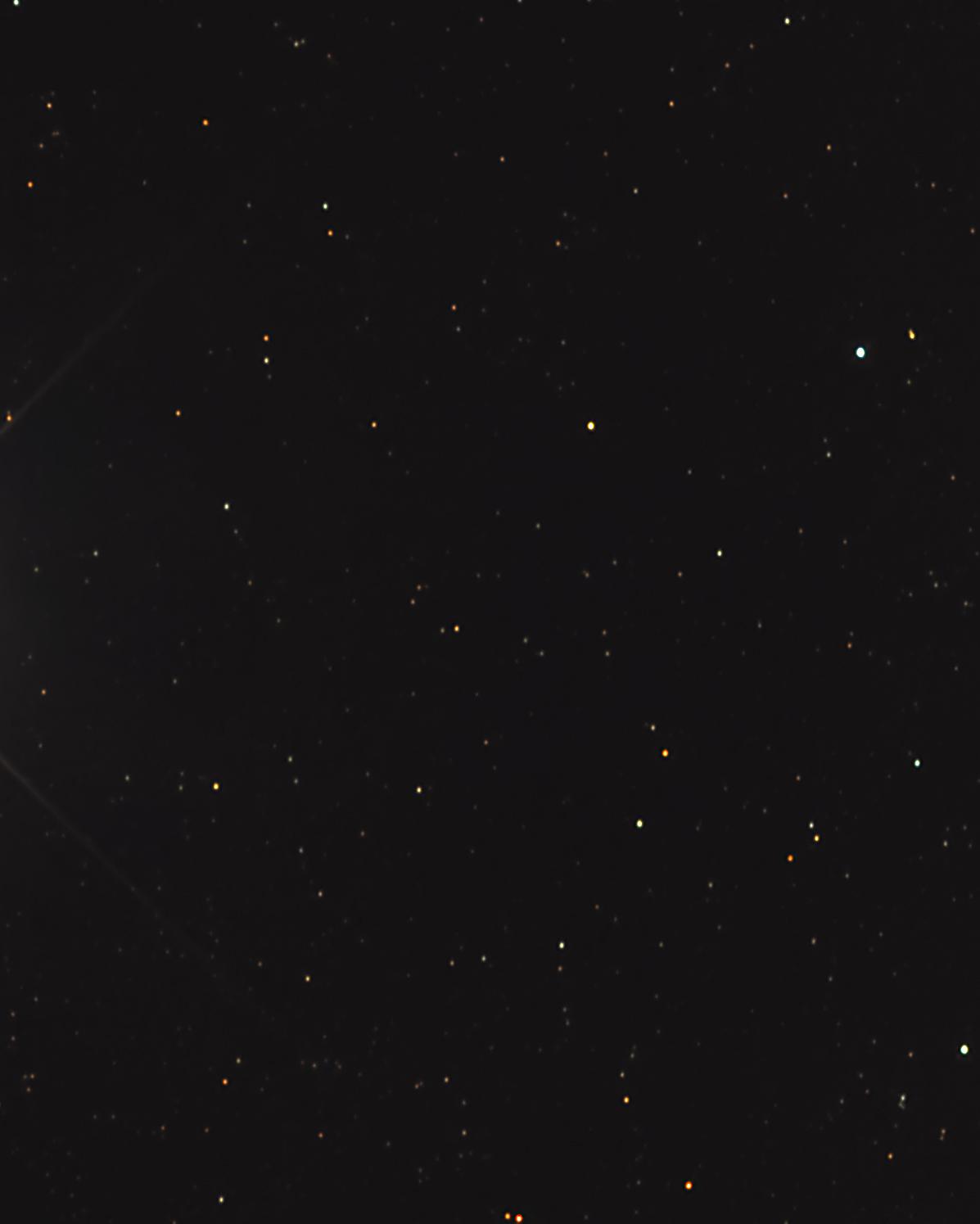
13
Innovate
Interplanetary Initiative Pilot Projects


14
Designing teams and projects
around big questions to accelerate impact.
SEED FUNDING
Projects teams, led by an ASU faculty member apply for and secure 1-year of seed funding. Projects receive project management support to ensure that goals are met.
MAXIMIZING IMPACT
Project outputs reach as many people as possible through commercialization, open source access, publication, licensing or other appropriate means.
LAUNCH VALIDATE PILOT SCALE
BIG QUESTION TEAMING
Diverse teams form around big audacious questions, set 1-year outcomes, activities and milestones.
MOVING
BEYOND INTERPLANETARY INITIATIVE
Project continues through partnerships and/or follow-on funding as a first step to scalability.

15
Pilot Projects 2022-2023
Earth Operations Center
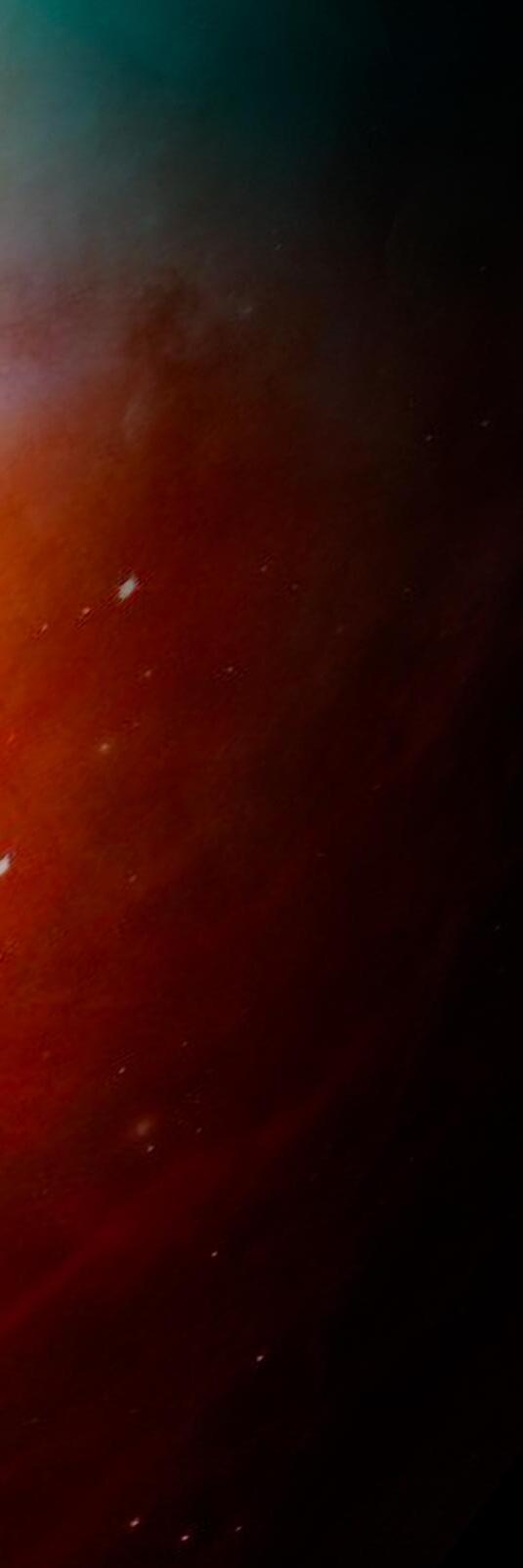
Howdowebecomebetterstewardsof“SpaceshipEarth?”
JakePinholster,ASUHerbegerInstitute
Inspired by a traditional spacecraft operations center, such as NASA’s Mission Control Center at Johnson Space Center in Houston, this project is a collaboration with MIT and NASA to create an operations center for “Spaceship Earth” that integrates both earth systems and economic modeling. The Earth science research center will track the health and status of the Earth’s ecological subsystems and enable collaborative decision-making using both virtual and physical spaces.
A virtual reality prototype of the Earth Operations Center has been created to inform stakeholders, media, climate researchers and policymakers on the effectiveness of different visualizations of climate data. The prototype will be presented this summer at NASA’s Earth Information Center showcase in Washington, D.C. in July 2023. This event is in coordination with the U.S. Chamber of Commerce and will be an opportunity for the project to continue developing partnerships with external groups for practical application of the technology.
16
Space Exploration and Sustainable Development*
Howdospaceexplorationanddevelopmentimpactprogresstowards achievingtheU.N.SDGs?
Teamlead:EricStribling, InterplanetaryInitiative

This project strives to understand how space exploration can support an equitable and sustainable future aligned with global environmental and social goals. This study uses the U.N. Sustainable Development Goals (SDGs) as a framework for research that will inform the creation of Environment, Social and Governance benchmarks to guide the burgeoning space industry towards Corporate Social Responsibility practices at an early stage of industry development.
Impact
The team presented its findings at the IEEE International Symposium on Technology and Society 2022 and is finalizing a white paper on how space technology impacts global social and environmental goals. Next, the team will publish on how the current space industry is impacted by social and environmental global goals. Next year, the team will publish a series of short videos that share their findings in an engaging format to promote discussion about how the growing and changing space industry can be more inclusive and sustainable.
*indicates that the project is renewed for FY24
17
Preventing Space War*

Howdowereducetheprobabilityofacataclysmicspacewar byredefiningthewaythatspaceisunderstoodandbylayingthe foundationsforaninnovative,interdisciplinarycommitmentto preservingspaceasacollaborativedomainfreefromwar?
 Teamlead:DanielRothenberg,ProfessorofPractice,SchoolofPoliticsand GlobalStudies;Co-Director,CenterontheFutureofWar
Teamlead:DanielRothenberg,ProfessorofPractice,SchoolofPoliticsand GlobalStudies;Co-Director,CenterontheFutureofWar
Space war has been a concern from the mid-20th century onwards. Yet the possibility of space war — whether a war in space or the significant use of space for enabling war — is rapidly increasing at a time when our global society lacks the tools, language and imagination to guide the conversations we need and develop the systems we require to minimize the probability of armed conflict in space. This project convened cross-sector space experts in Washington, D.C. for an open dialogue about the threats of space warfare with the goal to design better strategies for a more peaceful and sustainable use of space. Key highlights include: Keynote by Lt. Gen. DeAnna M. Burt, U.S. Space Force COO, and dynamic panels on space domain awareness, space law and conflict deterrence.
Impact
The team hosted a forum in Washington, D.C. that convened cross-sector experts to advance a common understanding of the importance of preserving a collaborative space domain benefitting all of humanity. A conference report will highlight the key themes, including the need for new norms and behaviors in space, and recommendations of next steps to advance these topics. Next year will focus on engaging a larger international audience in a workshop format for consensus-building on norms of good behavior in space.
*indicates that the project is renewed for FY24
18
A Global Heat Map of Space Activities*
Whatisthestateof“spaceactivities”globally,acrosscountries, agenciesandprojects?
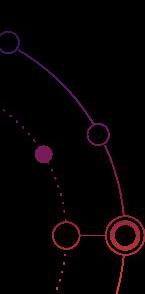
Teamlead:ChrisBryan,AssistantProfessorinComputerScience,School ofComputationandAugmentedIntelligence

A global perspective of space activity is currently not available. This project seeks to create a viewer of space activities through the lens of their key benefits, drivers and end goals, tracked at the project level over time, investment level and geographic location. By visualizing space activities and how they are globally spread across our planet, the heat map will provide a rich perspective about the diversity of space activities globally and allow stakeholders to engage with such information to help understand and drive future space-related activities. A visual, dynamic and interactive framing of the benefits of space will allow a broader set of stakeholders to engage with the information and take part in shaping future projects.
Impact
A prototype for the Global Heat Map of Space visualization tool has been developed. Next year, the team will refine and build out the prototype’s functionality and user interface. Once the tool is complete, it will serve to inform decision making and investment, and for general awareness of space activities.

19
Global Space Tech
Howcankeyspinofftechnologiesfromthespacesectorhelpadvance newspaceagenciesandeconomies?
Teamlead:EricStribling,InterplanetaryInitiative

Technology transfer is a key to increasing participation of nations and groups who do not currently have strong access to space. In the case of these new agencies, which usually require the mobilization of government resources, there needs to be justification of public value. NASA publishes extensively (NASA Spinoff) on space technology spinoff in the United States, but there is far less available research on this phenomenon in emerging spacefaring nations which need to justify related expenditures against other social concerns. This project seeks to contribute to an increasingly important body of literature on space technologies in select developing countries. Understanding the positive and negative impacts of space technology spinoffs and transfers will serve to inform government decision makers in these countries.
Impact
The team collected data relevant to space technologies transferred to society in the countries of Ecuador, Saudi Arabia, South Africa, Brazil and South Korea. The data is being analyzed and will be published. Early findings from the research suggest that while the role of spinoff technology and subsequent impact on the population can be quite evident in countries like Ecuador and Brazil, this assessment can be challenging in countries like South Korea where commercial space industry and national defense are inextricably linked and information is controlled.
20
JEDI Space*
HowdowebuildaJEDI(just,equitable,diverse,andinclusive) spaceforallofhumanity?
Teamlead:DianaAyton-Shenker, AssociateProfessor, SchoolofSocialTransformation
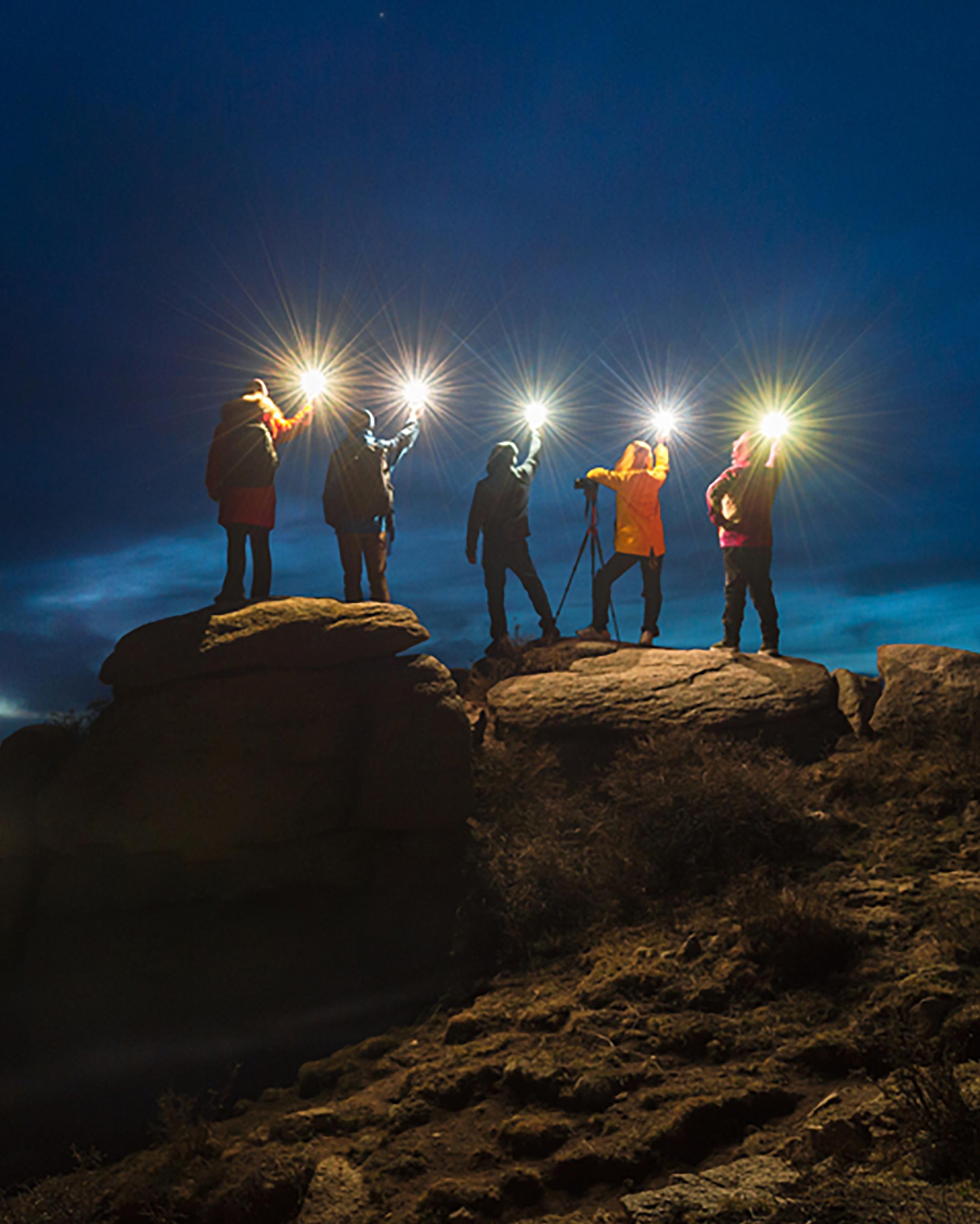
Many organizations are creating a Diverse, Equitable and Inclusive (DEI) workplace environment. However, there is little focus on creating DEI access to space. Even more critical, there is little emphasis on the “Just” aspect of access to space and the space community. This project will seek to answer the question of what a JEDI space means and how to open space access to more of humanity through surveys, conversations and events. An important goal of this project is to inspire action to create a space community that invites people to stay, going beyond metrics to understand the root cause of the metrics.
Impact
The team created the first-of-its-kind community of individuals from around the globe activated around the common drive for equitable and inclusive access to space. A white paper reporting on consensus definitions; community perceptions and experiences challenges; and a diversity, equity, inclusion and access (DEIA) framework will be published. Next year, the project, led by Professor Lance Gharavi from the ASU School of Music, Dance and Theatre, will create a tool kit and implementation model to drive space sector organizations to meaningfully incorporate DEIA across their business processes.
21
FY24
*indicates that the project is renewed for
SpaceHACK for Sustainability*
Howdoesspaceexplorationanddevelopmentimpactprogress towardsachievingtheU.N.SDGs?
Teamlead:EricStribling,InterplanetaryInitiative
Earth Observation (EO) satellite data is currently central to how governments monitor progress on many of the 17 United Nations Sustainable Development Goals (SDGs) (EO is used for nearly half of the U.N.’s 169 targets and 230 indicators). ASU is uniquely positioned to access troves of satellite data that can be used to develop cutting edge indices on measuring achievement towards the SDGs. The project’s student hackathon empowered around 150 students to address climate impacts, sustainable groundwater usage and wildfire risk to help better understand inequities and social disparity on Earth.
Impact
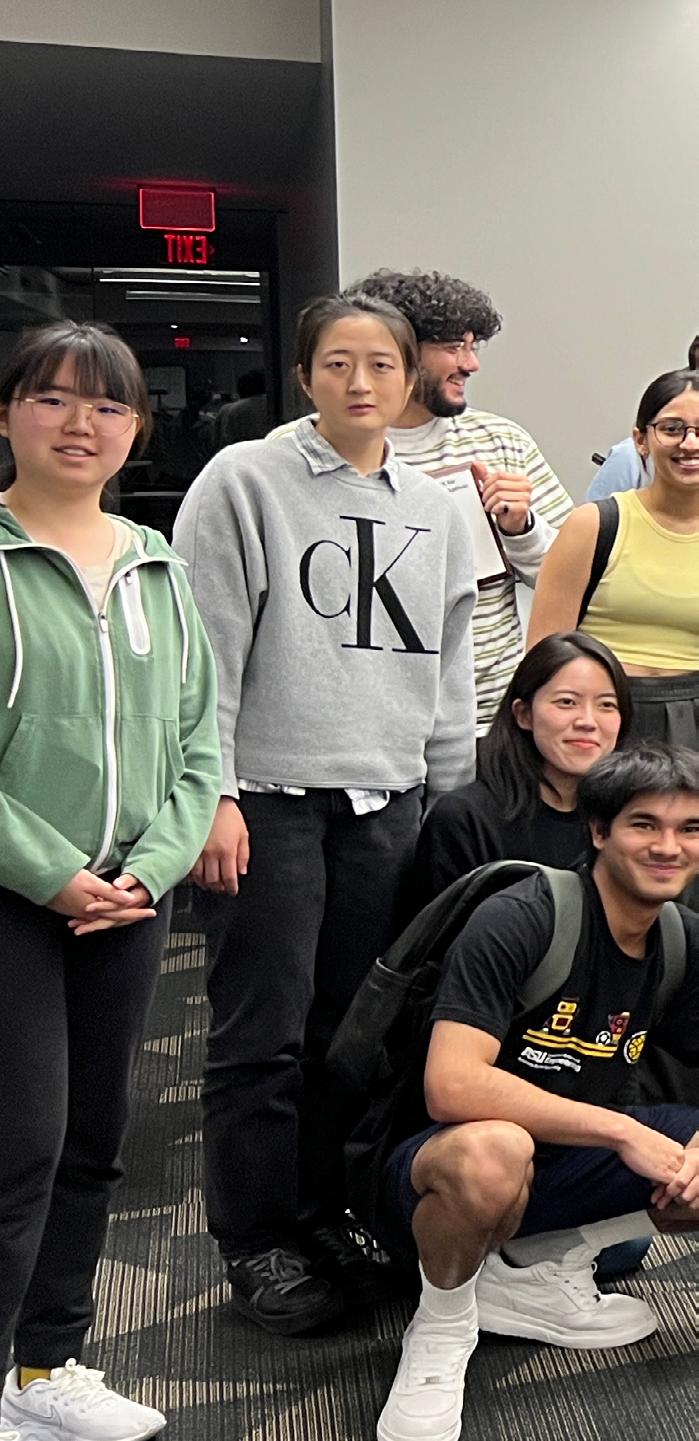
The SpaceHACK hackathon engaged 138 participants in person and virtually with participants from the United States, Ecuador, Brazil, Spain, Italy, India, South Korea and more. As a result of the project, SpaceHACK has now been integrated into an upper-level humanities course at ASU entitled, “Diplomacy Lab: Latin America.” Three conference papers have been submitted, with one more being submitted to the Society for the Study of Social Sciences 2023 in Honolulu, Hawaii in November. A PhD research position was created at the University of Nepal to continue research sparked by the hackathon’s track focused on Nepal. Next year, the project will seek international university partners to replicate and scale the program.
*indicates that the project is renewed for FY24

22
Mars on the Field*

Howdowegalvanizepublicandprivatesupportforspaceexploration, anarenathatcanseeminaccessibletomostpeople?
Teamleads:LauraCechanowicz,SchoolofArts,MediaandEngineering andDBBauer,SchoolofArts,MediaandEngineering
This project aims to make Mars data accessible and ignite public interest in the Red Planet. By stimulating XR creation and studying its use in broader educational and social environments around space exploration, Mars on the Field creates a multi-sensory experience walking participants through a history of space and Mars exploration.

Impact
The team unveiled a thrilling walkable Mars on the Field virtual reality experience at Sun Devil Stadium, featuring the vast history of our exploration of Mars. Next year will see the prototype developed further with a multiplayer experience and refined historical stories, art assets, and designs. The team will also demo the experience to more groups for feedback.
23
Sacred Space: Religion and Cosmic Exploration*
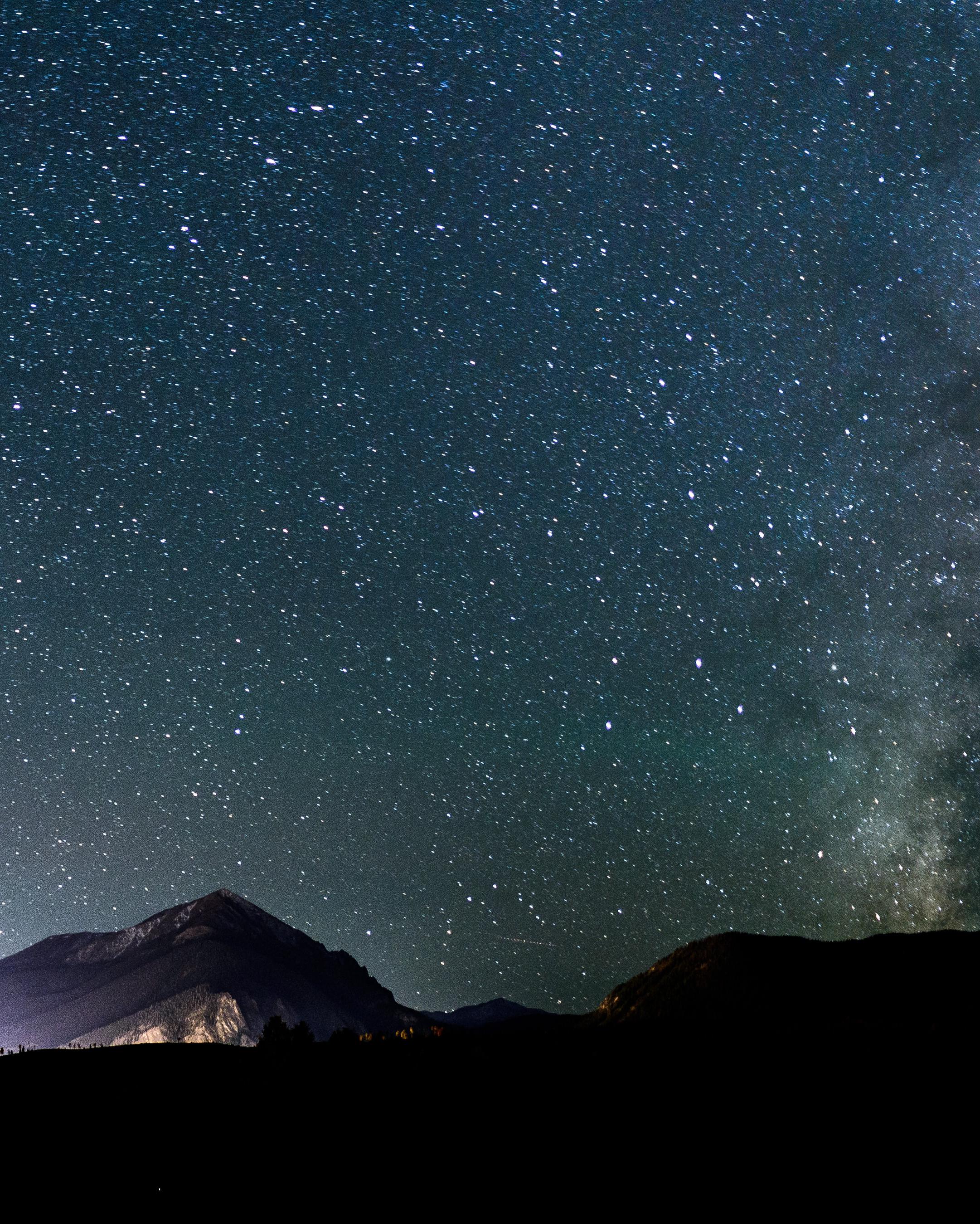
Whatdoesreligionhavetodowithspaceexploration?
 Teamlead:LanceGharavi,SchoolofMusic,DanceandTheatre
Teamlead:LanceGharavi,SchoolofMusic,DanceandTheatre
Space exploration is not isolated from culture; rather, it is imagined and practiced within it. The histories, ideologies, representations and practices of religion are central to imagining and building human space futures. This project conducted a series of four symposia where diverse guests from the space sector and from religious traditions discussed religion and space exploration— two topics that have been intertwined through human history.
Impact
Four online panel discussions among scholars took the audience on a journey that explored the intersection of religion, spiritual beliefs and practices from around the world and space exploration. Next year, the insights from these discussions will be disseminated through short videos to engage larger audiences.
*indicates that the project is renewed for FY24
24
New Pilot Projects
2023-2024
A Customer Discovery-Led Systematic Analysis Study of
the
U.S. Space Economy

Whoarethecustomersofthespaceeconomyandwhataretheirneeds?
Teamlead:GregAutry,Director,ThunderbirdInitiative forSpaceLeadership,PolicyandBusiness
This project seeks to study the current and near-future state of the space economy, reporting on areas of opportunity for space actors. The emphasis will be on understanding the drivers that will influence the economic sustainability of a global space economy by identifying specific current and near future customers of space data and space-manufactured products. The study will emphasize analysis of businesses that have not previously been seen as customers of space in industries such as agriculture, medicine and materials.
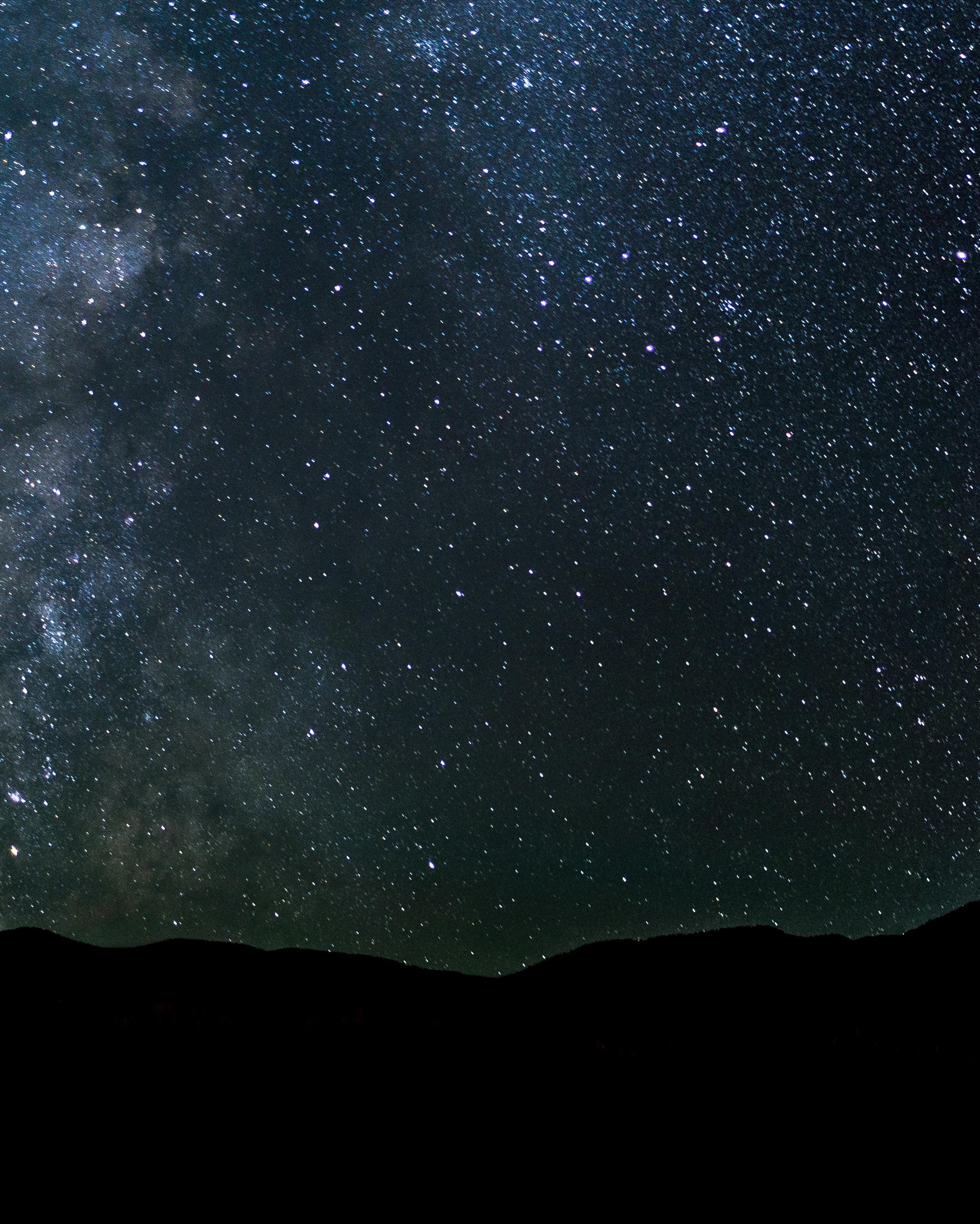
Lessons from the Past
Howcanlessonsofthepastinformourdecisionsforabetterspacefuture?
Teamlead:ElenaRocchi,ProgramHeadandClinicalAssociateProfessorof Architecture,TheDesignSchool
History serves not only as a mere chronicle of past events but also as a guide that imparts universal lessons and transformative processes for the future of humanity. As we stand at the intersection of a remarkable era of exploration, technology and finance, we must learn from the past to inform our decisions. Humans’ historical expeditions over the centuries offer a fitting analogy for our present circumstances. However, as these expeditions were often driven by the desire for profit and conquest rather than the pursuit of knowledge and discovery, we must examine their triumphs and tribulations to develop effective frameworks that inform philosophical and legal approaches to future space exploration.
The aim of this project is to draw insights from past exploration missions and analyze them to inform the establishment of the first human settlement on the moon or Mars. This project will produce a documentary examining the successes and failures of Earthbased exploration missions and leveraging the latest knowledge and technologies.The team will host an event that walks the audience through the lessons learned in a fun and engaging way.
25
Lunar Orbital Maps
Howcanwebuildeffectivemapsofspace(lunar)orbits?

Teamlead:MarkNaufel,ExecutiveDirector, ASULuminosityLab
As activity increases around the moon, understanding and characterizing the orbital environment of cislunar space will become important. The regions around the Earthmoon Lagrange points, in particular L1 and L2, have been the subject of interest for logistics, utility and security functions ranging from communications relays to refueling stations, situational awareness, low energy transfers, orbital research stations and more. Although we tend to think of this as a technical matter — characterizing specific orbital characteristics to inform mission planning or efficient transport — this invisible geography will increasingly become a landscape on which human geopolitics will play out. As we begin to engage with the notion of being a planetaryscale civilization with the Earth-moon system as our home, it is appropriate to consider the ways in which these environments may influence and inform the design of new patterns of human activity.
This project seeks to create maps of cislunar orbital space to serve as a reference point for discussion and analysis. The initial phase of the project will focus on customer discovery to uncover how this cartography is best leveraged to influence policy, norms and behaviors.
26
Lunar Rights and Resources

Howdoweestablishrealpropertyrightsinspace?
Teamlead:MarkNaufel,ExecutiveDirector, ASULuminosityLab
The issue of lunar property rights is a complex and contentious matter that involves questions about the legality and feasibility of commercial and international entities extracting and utilizing resources from the moon. As space exploration technologies continue to advance, it will become increasingly important to establish clear and equitable laws and regulatory frameworks for the management of lunar property rights in order to promote sustainable and responsible space activities.
The goal of this project is to leverage existing lunar resource maps, prioritize the analysis of a few key resources such as water ice, and develop a web-based simulation tool to explore the physical location of these resources and how these regions may be impacted based on certain policy parameters. The initial phase of the project will focus on ideation by dialing in the specific resources to be evaluated and having an understanding of which policy parameters are most influential on keeping lunar mining accessible, equitable and sustainable.
27
Space Economy Camp for Writers
Whatcouldasustainable,non-exploitativeeconomicmodel forspacelooklike?
Teamlead:JoffaApplegate,AssociateResearchProfessor,Schoolof ComplexAdaptiveSystems
Space provides a unique opportunity to imagine different futures not driven by the extractive paradigm that has fueled humanity’s expansion across the planet. Economists are already thinking about sustainable economic models for space. By empowering storytellers to imagine worlds and futures with new economic models, we can use the power of narrative to bring sustainable economic models for space into the public consciousness and into the conversations about policy.
The purpose of this project is to equip storytellers with a solid foundation of economic theory so they can imagine and create future worlds built upon new economic models for space. To achieve this, the team will bring together a small cohort of storytellers of different media and economists for an in-person interactive “Space Economy Camp.”

Space to Solve Climate Change
Howcanwerapidlyacceleratetheutilizationofspaceresources andin-spacemanufacturingtoaddressclimatechange?
Teamlead:MarkNaufel,ExecutiveDirector,ASULuminosityLab
Climate change is a global issue that will require innovative solutions. One potential avenue for addressing this challenge is leveraging space, which offers unique opportunities for monitoring, mitigating and adapting to the impacts of climate change on Earth.
The goal of this project is to research and evaluate how climate impacting activities on Earth can use space and its resources to minimize such impact. The team will conduct a rigorous ideation process to develop new ideas for using space to address climate change on Earth. The set of concepts will be down-selected by expert judges to identify the best solution for development.
28
On the way to impact Former pilot projects
Port of Mars
Port of Mars is a game-based, social science experiment that continues to serve as a test bed to study social dilemmas . Most recently, the game evolved into the online version — one that is open to the general public and allows for unlimited gameplay and automated data collection.

Scalable Interactive Model of an Off-World Community (SIMOC)
SIMOC has continued new simulation technology with SIMOCB2, a comprehensive simulation of the initial sealed missions conducted at Biosphere 2. Building upon this success, the team introduced SIMOC Live, a cutting-edge system that collects data from a wide range of sensors, used in SAM, a fully functional Mars Habitat designed to replicate the conditions of a sealed and pressurized environment, enabling researchers to simulate realistic scenarios for future Mars missions. SAM recently received $1.5 million in funding to expand its research.

29
the numbers
9 Projects active this year; 38 total over Interplanetary’s five years.
28 Disciplines crossing private, government and university sectors.
35 External collaborating organizations.
107 Team members, including 44 students.
$350,000 Interplanetary project seed funding.


2022-2023 30
Project impact by
Get involved Cumulative return on project investments 2017-2023
38 Projects. 6.5x ROI.
$1.45 Million+ Interplanetary project seed funding.

$9.5 Million+ External funding.

If you are interested in pilot project collaboration or funding opportunities, please reach out to Chase Kassel at cakassel@asu.edu. 31
Building better space hardware solutions to explore our Earth and beyond.

We support space hardware and software projects across the university and the greater community. Our equipment, facilities and staff are accessible and our pricing model is cost-effective so that we can advance smaller and earlier stage projects led by faculty, students and industry.

hardware projects
by the
5 faculty
Interplanetary Laboratory 32
Engagement
numbers
collaborators 569 lab users 4 Industry partners
Key milestones in developments and capabilities
CNC machine
cutting parts out of aluminum and steel.
Kratos radio
testing communications with spacecraft during development.

Expanded 3D printing
now printing with PLS, SLA, Nylon, ESD safe and HDPE materials.
Upgraded TVAC chamber
simulating the coldness of space down to -140C to help validate spacecraft thermal designs. Enhanced ground station pointing the directional antenna to track satellites during a pass and downlink data.
Vibe Table
simulated the vibrations experienced during launch for our first external customer with the SPARCS payload thermal simulator.
New CableEye unit
computer controlled testing the integrity of bespoke spacecraft cables.
Lunar Sandbox
64 sq ft of simulated planetary surface for testing locomotion of planetary rovers with an overhead hoist to simulate lower gravity.
Rover software advancements
deploying software to remotely control small rovers in our simulated lunar regolith sandbox.
33
Lab students driving innovation
LightCubeLaunch
The lab’s first 1U CubeSat developed entirely by students successfully launched and deployed from the International Space Station. Students and staff attended the launch at [location]. Learn more.
CharlotteMission
In collaboration with the Luminosity Lab, the lab helped test a tethered lunar rover which won second place in the 2022 BIG Idea Challenge from NASA’s Space Technology Mission Directorate (STMD) and NASA’s Office of Stem Engagement. Learn more.
ROAMERDevelopment
The lab partnered with industry under a Space Force grant to design a versatile microsatellite with robotic arms to restore objects to their intended orbits. Learn more.
DORAAdvancements
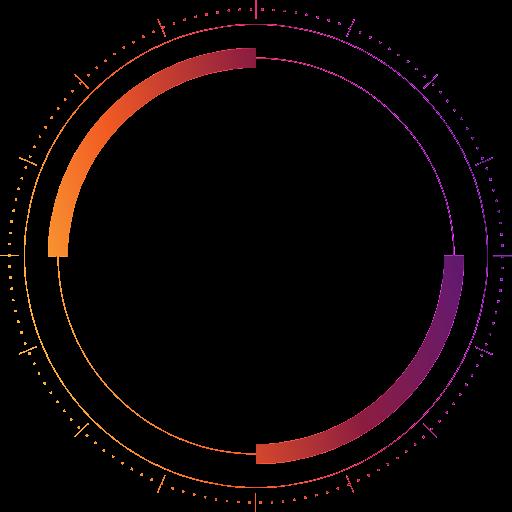
Students gained hands-on experience with design and development of communications, structural, power systems, and functional and environmental testing in support of the Deployable Optical Receiver Aperture (DORA) for Lunar Communications and Navigation 3U CubeSat project. Learn more.

34

If you’re interested in exploring funding opportunities or utilizing the lab’s facility, please reach out to Danny Jacobs at dcjacob2@asu.edu Get involved 35
Interplanetary Initiative welcomes second fellow to explore the intersection of space exploration, culture, science and religion.

This year, the fellowship which supports bold interdisciplinary projects and thinkers to further a positive space future is offered in collaboration ASU School of Historical, Philosophical and Religious Studies, focusing on projects that address the human, social and cultural implications of exploring outer space.

Interplanetary Fellowship 36
John Traphagan, professor emeritus of anthropology in the Program in Human Dimensions of Organizations at the University of Texas at Austin, was selected as the second recipient of the Initiative’s Interplanetary Fellowship.
As a scholar of Japan, Traphagan will explore how the Japan Aerospace Exploration Agency (JAXA)’s programs and narratives around space exploration are shaped by Japanese religious ideas. His findings will be included in an edited volume tentatively titled Religion and Space Exploration in Cross-Cultural Perspective and shared as part of a cross-cultural symposium to be hosted in the Spring of 2024. The symposium will discuss how religion, ideology, and space exploration intersect in different societies and shape the ways those societies approach space exploration.


Learn
Interplanetary learning programs
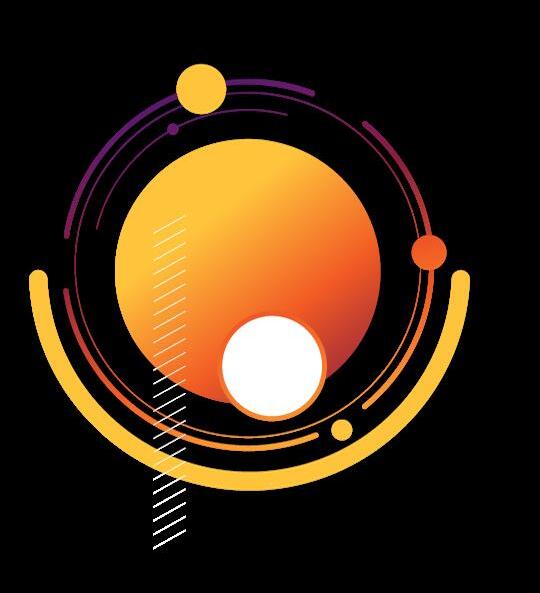
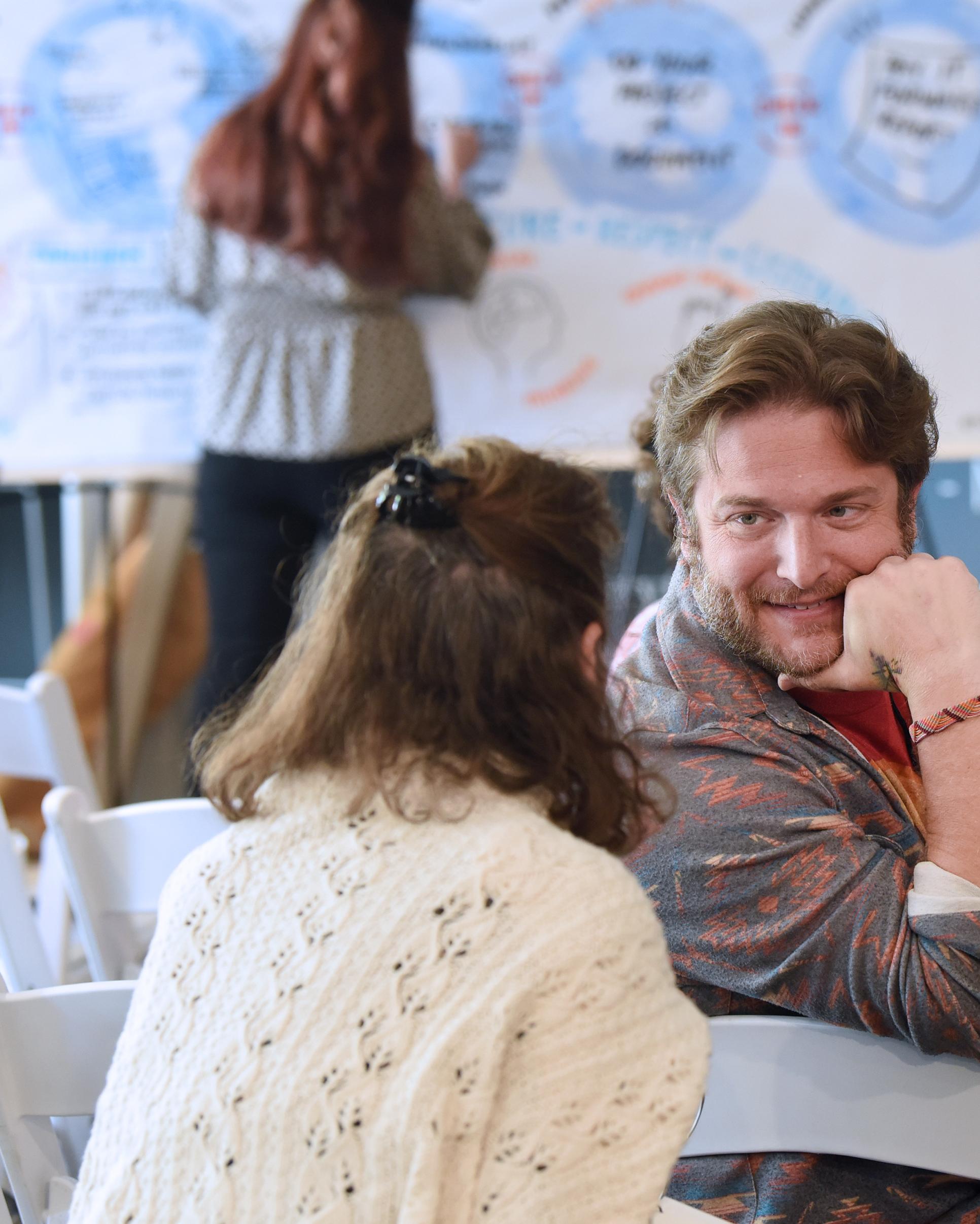
38
Preparing the problem-solvers of the future.
Our educational endeavors foster student agency and empower learners to become the leaders and collaborative problem-solvers of tomorrow.

39
Technological Leadership
Explore big, unanswered questions in science and technology


Interdisciplinary research
Prototype devices, design new systems, and craft business
Congratulations to our graduates
Think strategically and collaborate effectively in teams
This year, our technological leadership program graduated seven students, our biggest graduating class to date. Spring 2023 graduate Jason Alexandre is stepping right as systems engineer at Raytheon Missiles and Defense. Our first graduate from the Technological Leadership program, Parker Cohensitt, landed an exciting as a Computer Design Technician at Hanger Inc., where he designs cranial helmets for infants.
ceT h n ol o gydevelopment
lead e r s h ip Technological Leadership
Collaborative
40
Innovative courses
Current students created innovative projects in one of our core making class series, Designing and Making for an Interplanetary Future. In IPI 241 and 341, students get more than the traditional classroom experience as they learn tools and processes for solving global and interplanetary problems, with special consideration given to how technologies impact society.
New minor in Technological Leadership

We officially launched and welcomed the first students minoring in technological leadership. The minor aims to get more students involved in the hands-on, student-driven learning that is central to the Interplanetary Initiative’s educational programs. The minor is designed to enhance a student’s current major with courses that allow them to bring their own skills and interests to real research and projects. Students enrolled take courses in three core areas: inquiry, making and leadership.
Online Undergraduate Research Scholars program
This fall, we launched the Interplanetary Initiative’s Online Undergraduate Research Scholars program, supported by a grant from the College of Liberal Arts and Sciences. We brought on 18 online undergraduate students from 11 majors to contribute to six of our pilot projects. The students made invaluable contributions to our interdisciplinary research projects, including our Preventing Space War forum and JEDI Space project. The program will continue in fall 2023, and we look forward to welcoming our next cohort of students!
41
Training individuals, teams, and organizations on the processes for learning and problem-solving needed for communities to thrive.



42
More than 40 educators gathered for a weekend of collaborative problem-solving and constructivist learning. Attendees participated in a series of highly interactive workshops, gaining skills in teaching and facilitating inquirybased learning through the OpenCitizen process, and leaving with a plan for bringing this process to their schools or classrooms. All attendees were eligible to apply for pilot funding to support implementation, and we’re excited to be working with a cohort of more than a dozen teachers as they roll out OpenCitizen programs in their fall 2023 and spring 2024 classrooms. High school students who submit completed deliverables are eligible to receive ASU credit for their work via a collaboration with Learning Enterprise’s Universal Learner Courses program.


43
Practical online leadership training for aerospace scientists and engineers.
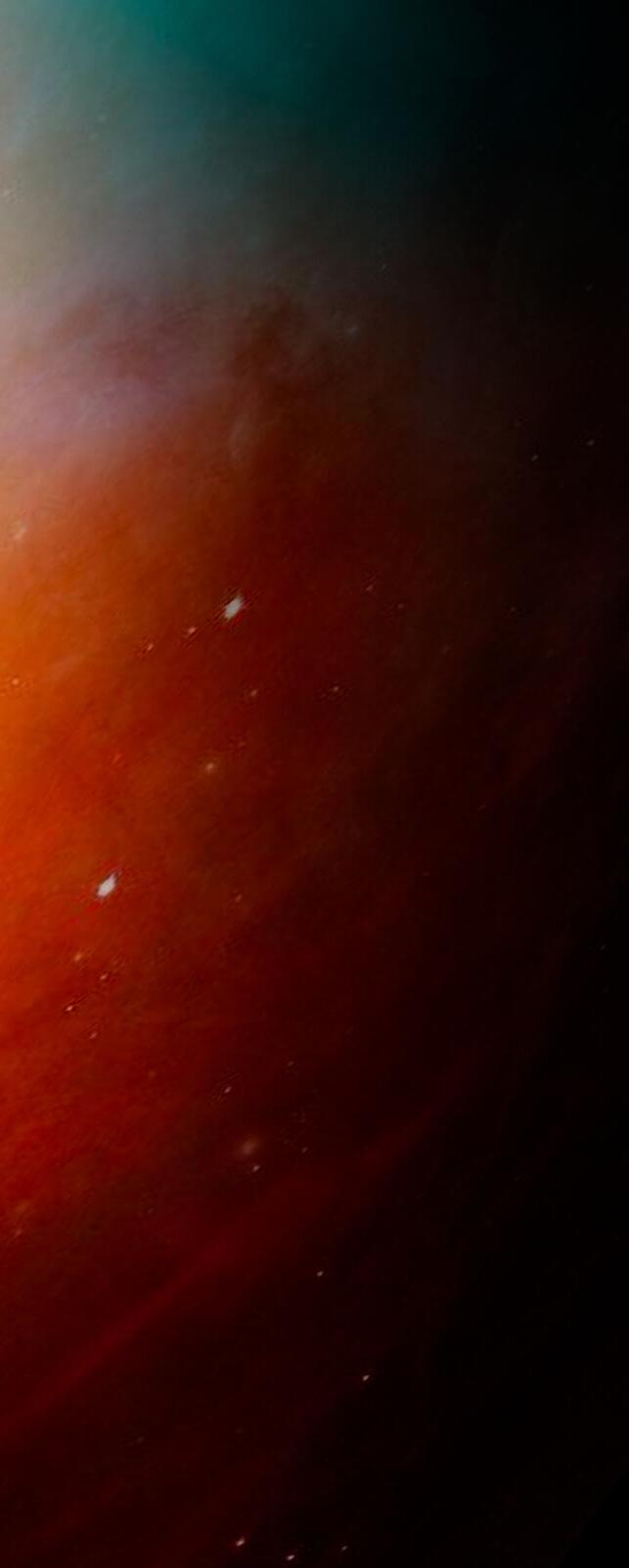


44 SciTech Space Leadership program
We have been collaborating with industry, government and academic leaders to develop an online upskilling program for technical space sector professionals who are leading and managing large projects. The self-guided program is geared toward engineers and scientists who are taking the next steps into leadership roles and seeking the critical skills that leaders need in team building, project management and financial operations. The program is set to launch in fall 2023.

45
Collaborate Collaboration unleashed

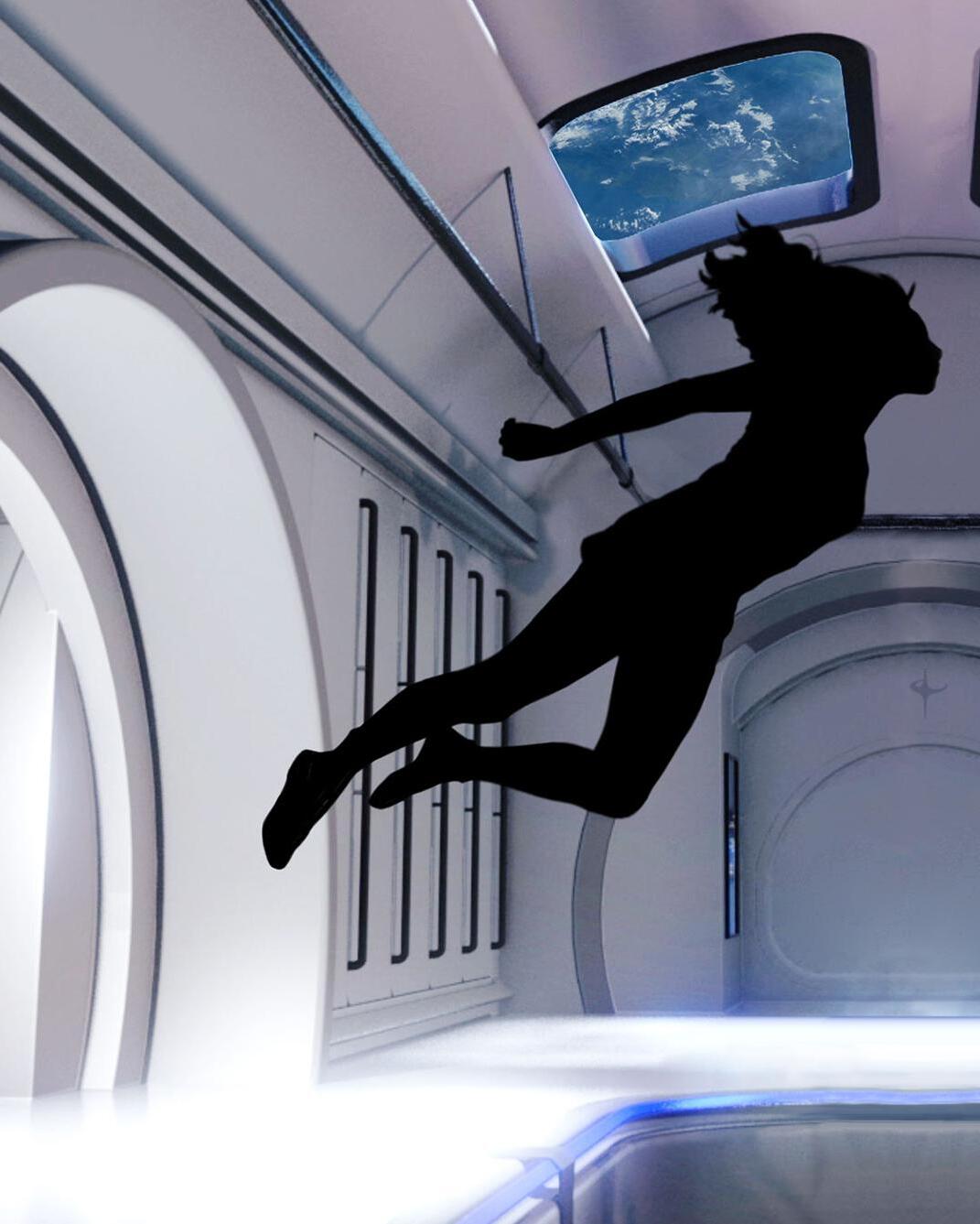
46
Activating new networks across ASU and beyond.
The Orbital Reef University Advisory Council
The Interplanetary Initiative continued its progress with Blue Origin and Sierra Space to collaborate on a low-Earth orbit (LEO) space station, called Orbital Reef, which received $130 million in funding from NASA through a funded Space Act Agreement.
The Interplanetary Initiative hosted the Orbital Reef University Advisory Council’s annual meeting in Tempe, uniting its members to review progress, set goals, and drive equity-focused research, education and innovation in LEO.

47
Space Futures Convening
The 2023 Space Futures Convening united visionary leaders to tackle big questions to collectively drive forward more sustainable, inclusive and impactful solutions for our interplanetary future. We convened 60 singular minds from diverse fields to inspire fresh ideas and foster innovative collaborations. Activated through our Big Questions Teaming method, half of all conveners committed to advance new project ideas that emerged.

48
Sketch of Space
Drawing upon the collective perspectives from the 2023 Space Futures participants, Sketch of Space inspired insights through art for broader engagement. Explore the space achievements of 2022 and the exciting space predictions for 2023 showcased in this engaging publication.

Breakthrough Starshot
Breakthrough Initiatives and the Interplanetary Initiative joined forces to host a workshop laying the foundations for the first privately funded launch to Alpha Centauri, the closest star system to our solar system located about 4.24 light-years away from Earth. The workshop united over 30 experts who exchanged ideas around the development of the Starshot communications sailcraft and ground station transmission and receiving systems.
49
AZ in focus: Pathways to an out-of-this-world economy

The Interplanetary Initiative and ASU’s NewSpace Initiative collaborated with the Greater Phoenix Chamber to host a panel discussion with university and industry leaders about space travel, tourism and manufacturing and how the valley continues to lead space innovation.

Arizona Space Summit
The Interplanetary Initiative collaborated with ASU’s NewSpace Initiative, the Thunderbird School of Global Management, the School of Earth and Space Exploration, the Ira A. Fulton Schools of Engineering, and other units to host the first Arizona Space Summit. The Summit brought together industry, academia and policymakers to highlight the state’s talent, infrastructure and innovation and explore opportunities to grow the commercial space sector in the state. Together with our partners, we hosted over 100 space leaders and a dozen participating companies attended the space career fair.
50


51
Space Career Fair
The first-ever space-focused career fair at ASU, held in conjunction with the Arizona Space Summit, was a hit with students and industry professionals alike. The event successfully connected over 200 students with 12 space companies, including industry giants like Blue Origin and Planet. Yielding immediate positive outcomes, two students secured job offers and two others landed coveted internships as a direct result of the career fair.
ASU Space Student Ambassadors

We welcomed the inaugural cohort of 12 student space ambassadors selected to represent space activities and programs across the university. These extraordinary undergraduates championed ASU’s vast space portfolio, inspiring and educating diverse audiences throughout the year.
To get involved in ASU Space, please visit space.asu.edu.
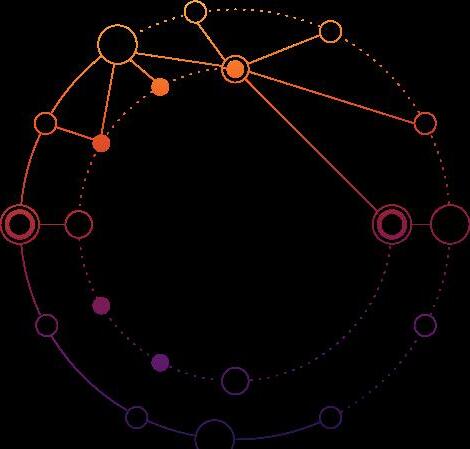


52

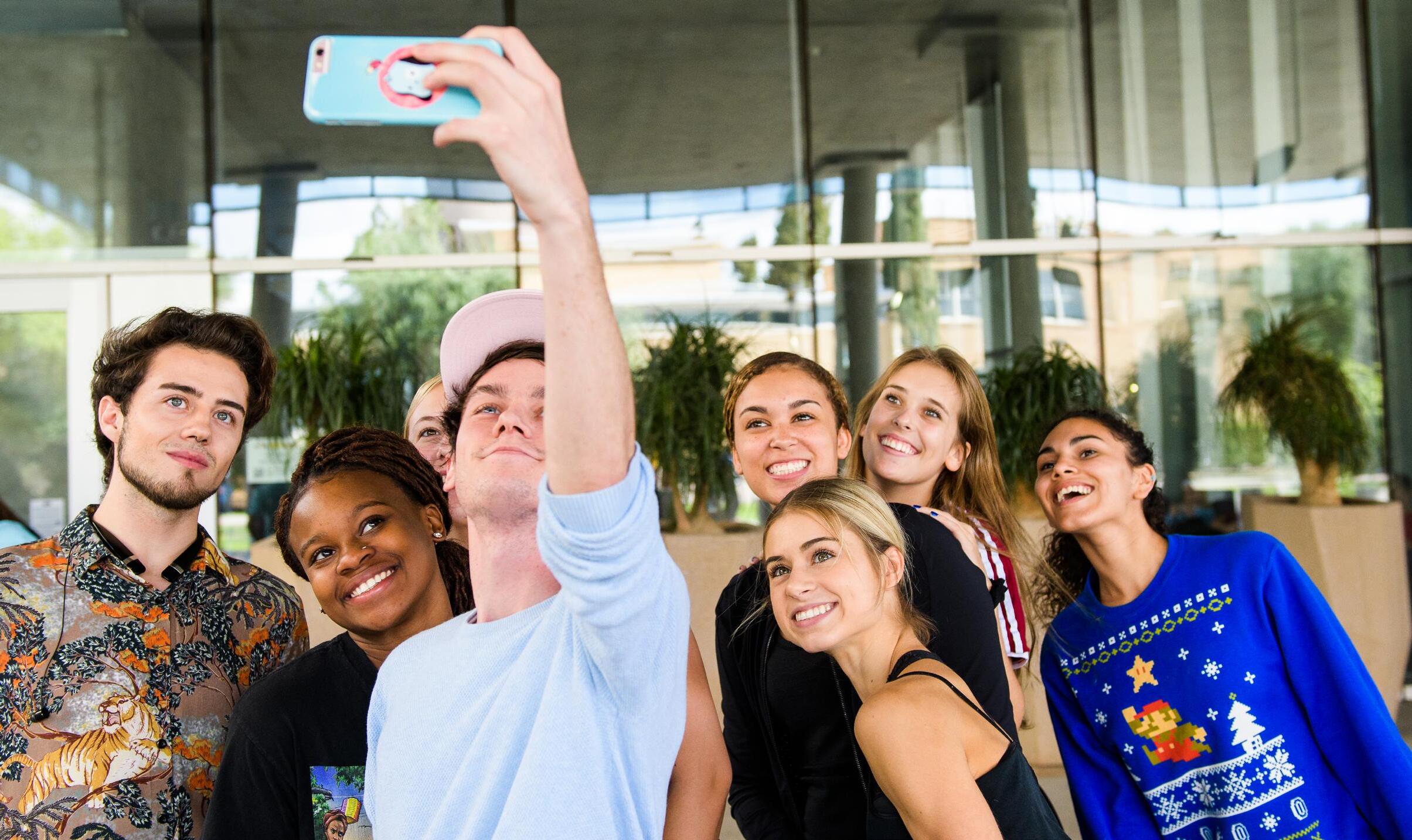
53
Engage
Promoting space for all


54
Opening doors to ignite curiosity.
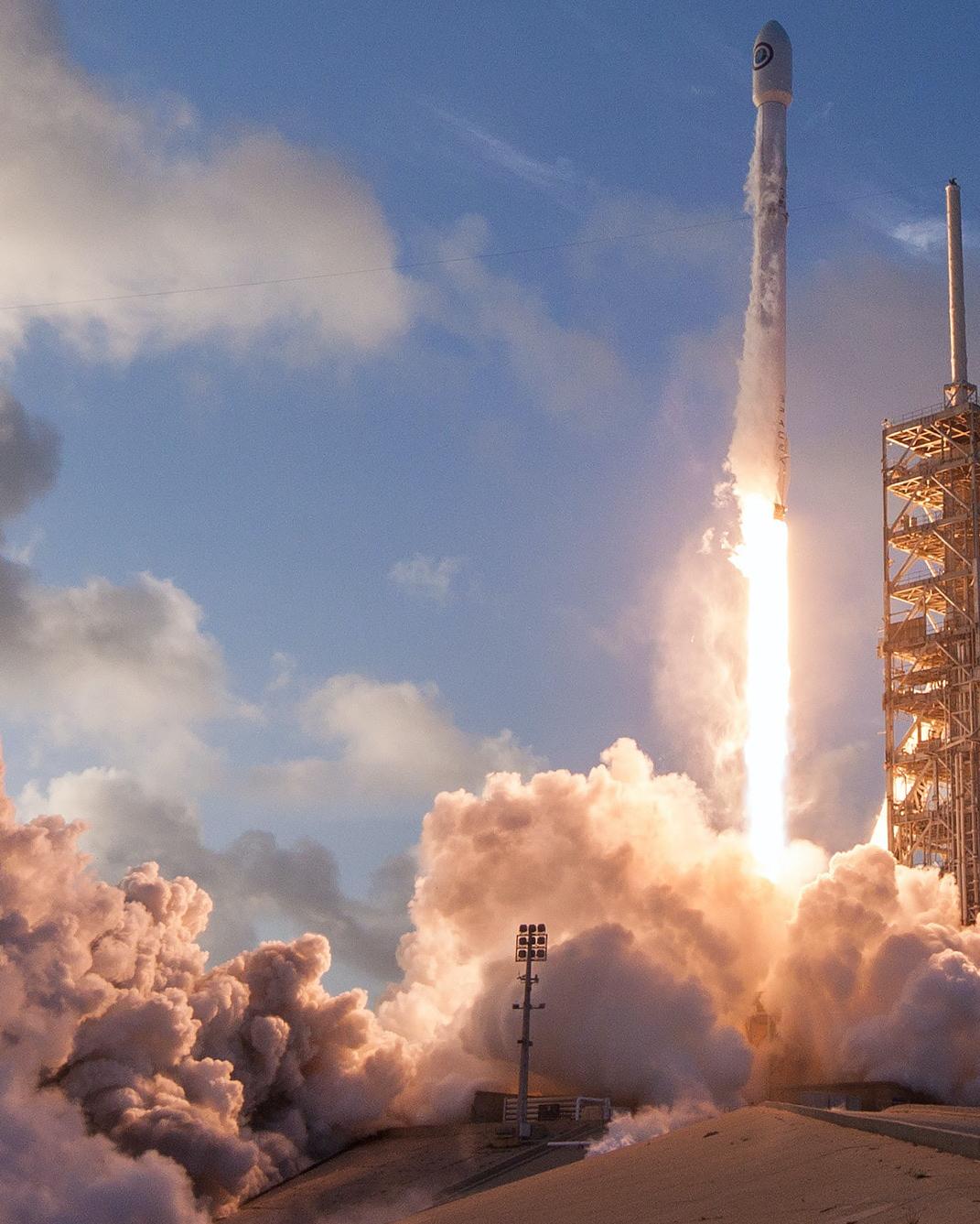
55
“Mission: Interplanetary” Podcast

In its culminating Season 3 of “Mission: Interplanetary,” hosts Andrew Maynard and Cady Coleman orchestrated captivating discussions with seven esteemed guests. From the intricate challenges of orbital debris to the future governance of the moon, these thought-provoking topics were expertly explored.
Museum of the Moon

Illuminating the night sky, ASU Space and Desert Botanical Gardens co-organized Museum of the Moon, a 23-foot diameter glowing moon art installation with detailed views of the lunar surface. Mark Robinson, a distinguished professor from the ASU School of Earth and Space Exploration, captivated the audiences with his profound presentations on lunar science. Enhancing the overall experience for the audience members was the display of ASU’s Tycho Lunar Rover.

56
#AimHigher with #Space2Inspire
Celebrating black history, ASU joined forces with ASU 365 Community Union, SPACE for a Better World, and Space2Inspire. A giant art mosaic at Sun Devil Stadium captured the spirit, honoring ASU graduates Ed Dwight, pioneer astronaut, and Sian Proctor, a trailblazing SpaceX astronaut.

Interplanetary Project Transmissions
The Interplanetary Initiative conducted a series of four Interplanetary Transmission webinars, where we provided updates to the space enthusiast community. The webinars featured progress on our research projects, learning programs and partnerships, playing a vital role in advancing our goals of interplanetary research and discovery.
57
Team Dynamic teamwork


59
Everyone is invited all the time.
Our team is built on character, rooted in deliberation, and energized through action. Respect, curiosity, and inclusivity drive our culture and the space futures we seek to create.
We strive to embrace diversity in all its forms, including race, ethnicity, gender identity, sexual orientation, religion, nationality, age, ability, veteran status, and neurotype. We believe achieving greater diversity in our faculty, staff and partners will advance our mission to create positive space futures.

60
Michael Crow
ASU President Co-chair, ASU Interplanetary Initiative
Ashley Lepham Lab student
Benjamin Weber Lab student
Cassandra Threadgill
Sr. Academic Success Advising Coordinator
Chandler Hutchens Lab student
Chase Kassel
Portfolio Manager
Lindy Elkins-Tanton
Vice President and Co-chair, ASU Interplanetary Initiative Principal Investigator, NASA Psyche mission Co-founder, Beagle Learning
Chetan Nagaraja Student Interaction Designer
Christopher McCormick Lab student
Daniel Jacobs
Associate Director Eric Stribling
Assistant Teaching Professor
Evgenya Shkolnik
Associate Director
Genevieve Cooper Lab student
Jessica Rousset
Deputy Director, ASU Interplanetary Initiative
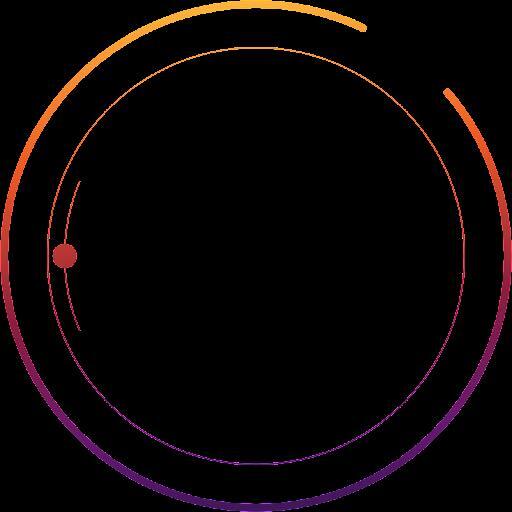


Joe DuBois
Special Projects Engineer
Juana Garcia
Business Operations Manager
Kennedy Gourdine Administrative student worker
Lance Gharavi Associate Director
Sam Cherian Lab student
Katherine McConachie
Sr. Director, ASU Interplanetary Initiative

Sid Vaidy Lab student
Sona Seely
Executive Assistant
Taryn Struck
Sr. Program Manager
61
Advisory board
Lisa B. Callahan
Vice President and General Manager of Commercial Civil Space, Lockheed Martin Space
Rejane Cantoni Interactive Installation Artist
Tracy Drain Flight Systems Engineer, Jet Propulsion Laboratory
Tanja Masson-Zwaan
President, Emerita of the International Institute of Space Law (IISL)
Rob Meyerson Aerospace Consultant
Affiliated faculty
Greg Autry
Thunderbird School of Global Management
Diana Ayton-Shenker
School for the Future of Innovation in Society
Jim Bell
School of Earth and Space Exploration
Jeffrey Cohen
The College of Liberal Arts and Sciences
Cady Coleman
School of Earth and Space Exploration
Kevin Corley
W.P. Carey School of Business
Lenore Dai
School for Engineering of Matter, Transport and Energy
Nnedi Okorafor
Nigerian-American writer
Amy Salzhauer
Founder and Managing Partner, Good Growth Capital
Jessy Kate Schingler
Founder and Chief Policy Analyst, Open Lunar Foundation
John Thurmond
Principal Advisor, Hess
Scott Webster
Co-founder, Executive and Director, Orbital Sciences Corp.
Edward Finn
Center for Science and the Imagination
Robert LiKamWa
School of Arts, Media and Engineering
Phil Mauskopf
School of Earth and Space Exploration
Andrew Maynard School for the Future of Innovation in Society
Joe O’Rourke
School of Earth and Space Exploration
Jake Pinholster Herberger Institute
Meenaskshi Wadhwa
School Of Earth and Space Exploration
62
Celebrating our team members’ achievements

Assistant Teaching Professor Eric Stribling got his PhD in innovation in global development from the ASU College of Global Futures.
Associate Director Evgenya Shkolnik was promoted to full professor at ASU’s School of Earth and Space Exploration.

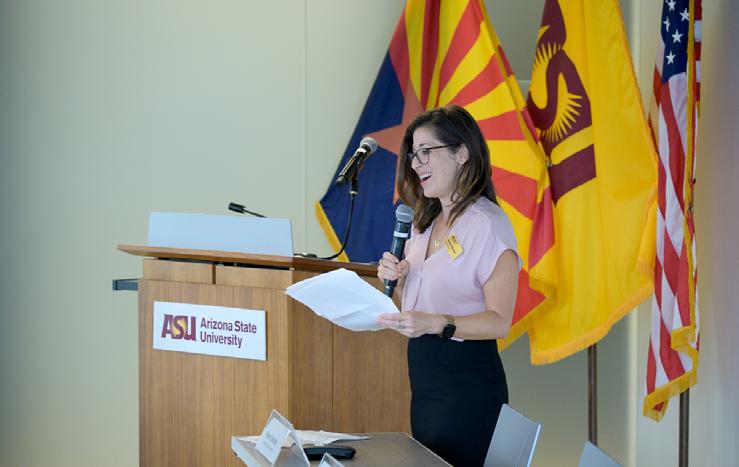
Portfolio Manager Chase Kassel graduated with a Master of Global Management in space leadership, business and policy from ASU’s Thunderbird School of Global Management. He welcomed a baby boy!


Special Projects Engineer Joe DuBois enrolled in ASU’s School of Earth and Space Exploration to get his PhD in systems engineering.
Katherine McConachie was promoted to senior director of learning and also welcomed a baby boy!
63
Taryn Struck was promoted to senior program manager.
ahead Looking

64
We’ve designed a model for interplanetary scale that nurtures new and bold ideas, that is nimble and flexible, and that ensures the broadest reach inside and outside of ASU.

As we look ahead to the coming year, the ASU space community is poised to expand its collective efforts to make a profound difference not only on our campus but also throughout Arizona and across the globe. Indeed, we now set our sights on scaling our methods and programs with local and international partners.
We look forward to driving new connections across ASU, deepening our engagement with a visionary community of space sector leaders, and scaling the impact of our proven programs and processes.
Get
involved
For more information on how to engage the ASU space community, email space@asu.edu.
65

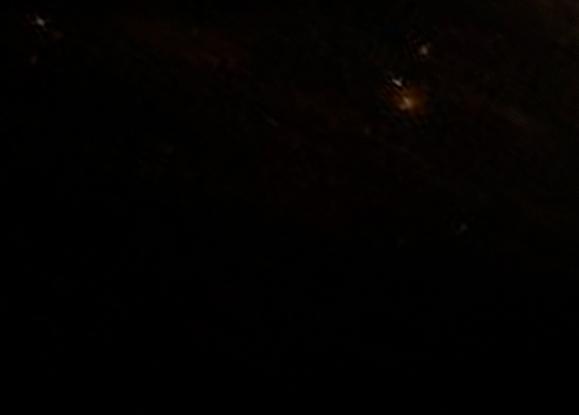
Interplanetary
visit
subscribe for
you
ASU Interplanetary Initiative is a unit of ASU Knowledge Enterprise. Produced by ASU Knowledge Enterprise. © 2023 Arizona Board of Regents. All rights reserved. Interplanetary-Initiative-year-in-review-07112023.pdf
To learn more about how you can get involved with the
Initiative, please
interplanetary.asu.edu or
updates. We are creating one possible vision for the New American University, and this venture will help keep ASU at the forefront of both the space enterprise and educational innovation. Thank
for your support
2022-2023 Year in Review


















 Lindy Elkins-Tanton Vice President, ASU Interplanetary Initiative
Lindy Elkins-Tanton Vice President, ASU Interplanetary Initiative






 – John Traphagan, Arizona State University’s newest Interplanetary Initiative Fellow
– John Traphagan, Arizona State University’s newest Interplanetary Initiative Fellow













 Teamlead:DanielRothenberg,ProfessorofPractice,SchoolofPoliticsand GlobalStudies;Co-Director,CenterontheFutureofWar
Teamlead:DanielRothenberg,ProfessorofPractice,SchoolofPoliticsand GlobalStudies;Co-Director,CenterontheFutureofWar










 Teamlead:LanceGharavi,SchoolofMusic,DanceandTheatre
Teamlead:LanceGharavi,SchoolofMusic,DanceandTheatre























































































